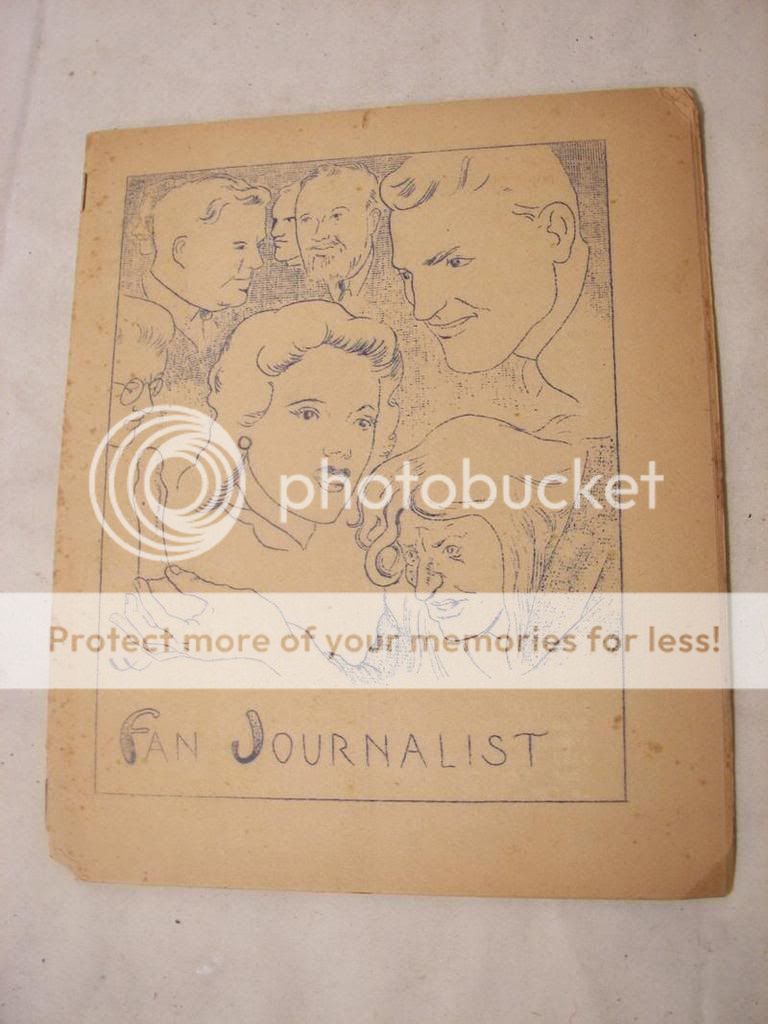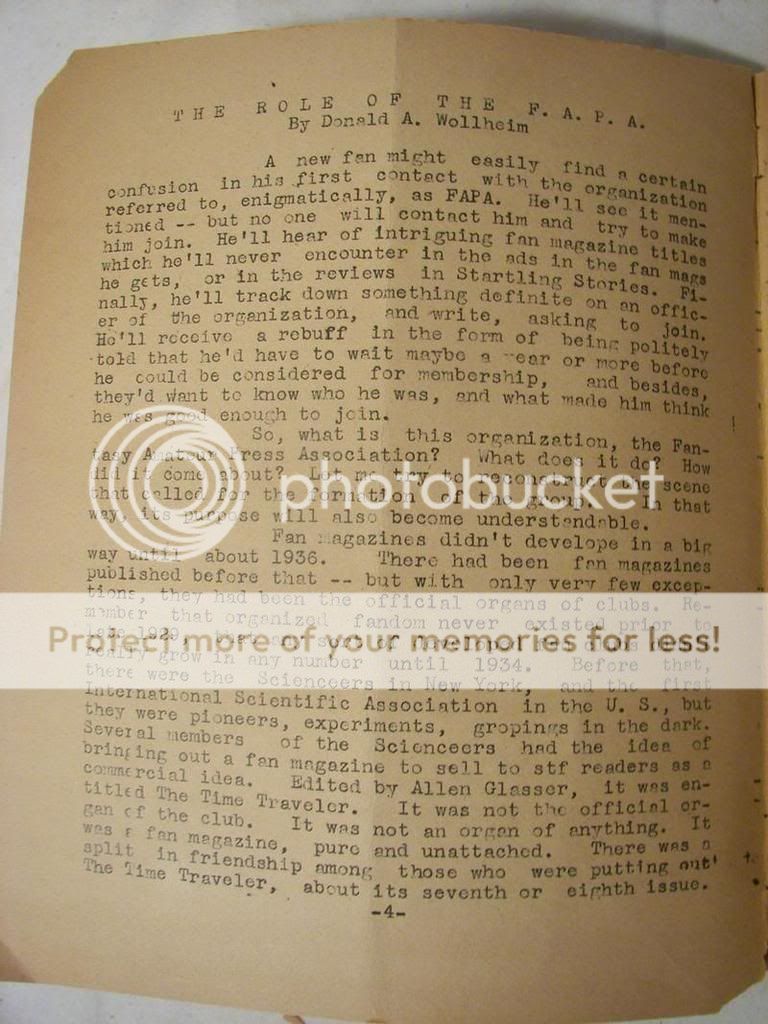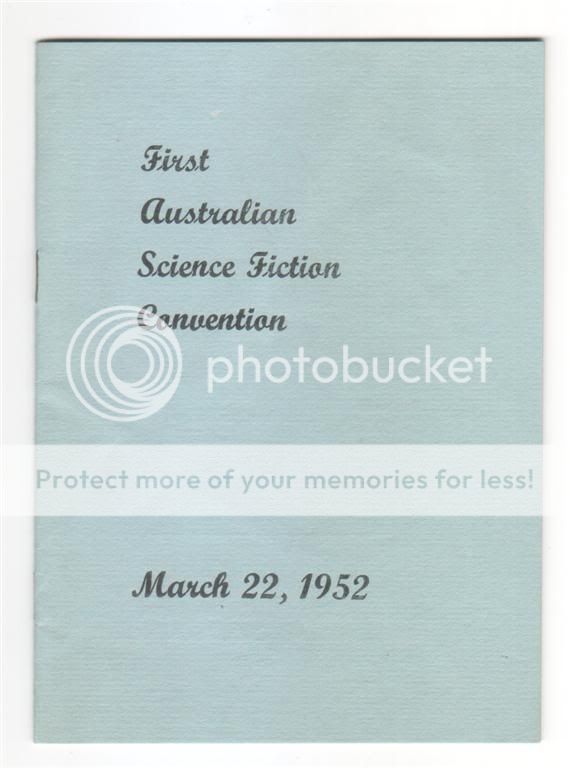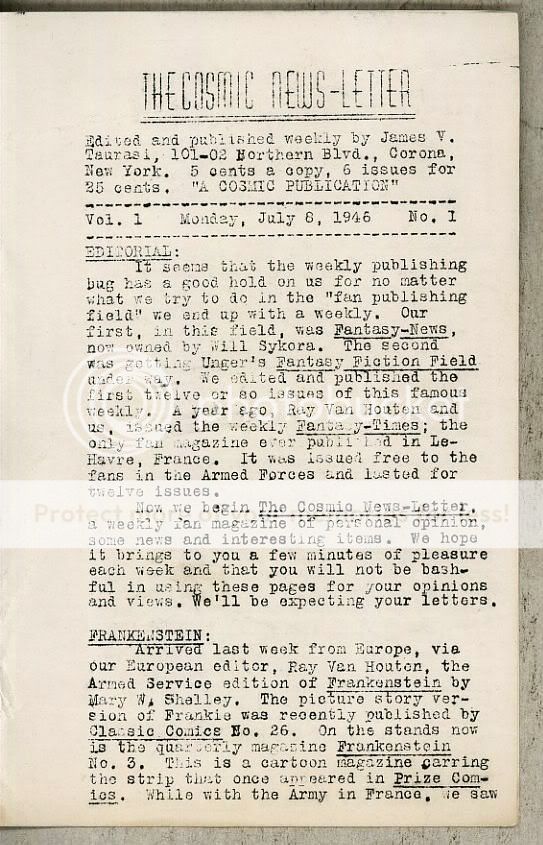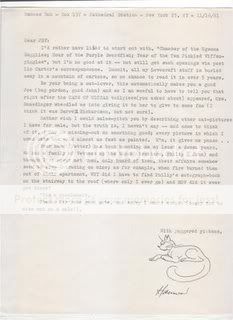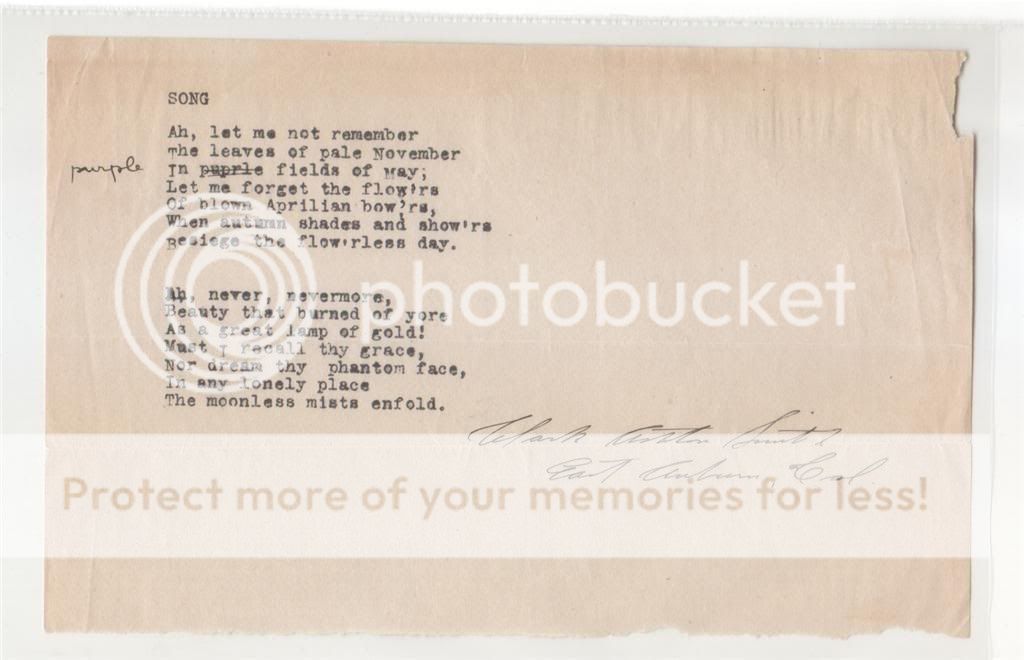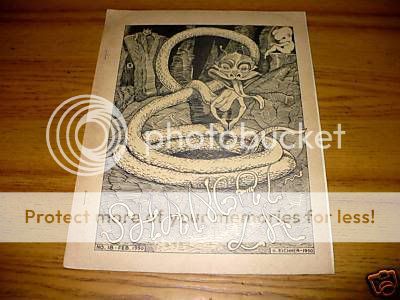

"Ye Hermit of Hagerstown", Henry Warner, Jr., 303 Bryan Pl., Hagerstown, MD{?} _ for Voice - - well, it seems the only way I might be able not to get a {line?} in is to write in detail about it. Maybe that's the secret formula. Copver {?} time ("Beauty & the Bugle") of doubtful stfan {scientifiction fan} interest but doubtless of interest in other ways. No doubt about it, I don't doubt.
And there really seems to be little to say about the letters this time. Vincent Manning might be interested to know, though, that the reason I write in a fairly accurate version of English is that I'm completely a creature of habit - - more, so, perhaps than anyone I know. Every time I make a typing error I have to remember the word I did wrong, or _ to remember it at least, and make a conscious effort to get it right the next time; otherwise, it'll be wrong in practically the same way. If I do it wrong twice, then the habit is deeply enough engrained that I do the same thing wrong a long, long time. It's the same with me in everything. Therefore, I don't start to use Ackermanese, nonstopparagraphing, or any other eccentricity in letters, or I'd be bound to forget to change back when typing something important. If it weren't for that, I probably succumb to all the goofy ideas immediately and continue using them until the fad wore off.
These Australian fans give more trouble with copies of Horizons; I'm positive they're in some sort of conspiracy telling me they aren't getting their copies in an effort to corner the market on Horizons and sell later at a ridiculously high price. However, I'll probably try to find another copy of that issue of H{orizons} for Vol, although I have my doubts {as?} to my chances of success. Several guys ordering big bunches of back issues have about cleaned me out of stock.
About the little red gentleman on the editorial page, when I first opened this issue of VOM {Voice of Imagination} #11 he reminded me irresistibly of something. I spent hours over it, and then it suddenly came to me - - on a li{ttle?} ad for rather violent introductory cards that Corwin Stickney sent out with one issue of his magazine. Or at least I believe that's where I saw it; I haven't energy to look, and besides the temperature is about 10 {degrees} above in our barn-like attic and it would mean either freezing or going to all the work of putting on an overcoat.
(Well, just as well, Harry, for your search woudve {sic} been in vain; little redevil {sic} of a Marsian {sic} was swiped not from an old Amateur Correspondent ad but from something to do with a certain Sham Poo {sic}. Ditto our "Getting' in your Hair ad.)
_____
The seller states: Description:
"Voice Of the Imagination" - April, 1941
Edited & Published by Forrest J. Ackerman & MorojoIn addition to being a striving author, the young Ray Bradbury was a fine amateur artist - especially caricatures. Bradbury is present in this issue of "VOM" not with his poetry, essays, stories or puns(!) but with his own self-caricature! Because Bradbury was a popular fan personality he also became mentioned more and more in passing: letters, commentary, etc., and is additionally noted in this issue. These fanzine appearances of the legendary "Mr. B" are some of his rarest and hardest to acquire - even for the hardcore Ray Bradbury collector! The few times they are offered they are quickly snatched up. This copy has a few small chips from the front cover and a moisture stain along the top, but internally it is a nice copy never folded for mailing
And there really seems to be little to say about the letters this time. Vincent Manning might be interested to know, though, that the reason I write in a fairly accurate version of English is that I'm completely a creature of habit - - more, so, perhaps than anyone I know. Every time I make a typing error I have to remember the word I did wrong, or _ to remember it at least, and make a conscious effort to get it right the next time; otherwise, it'll be wrong in practically the same way. If I do it wrong twice, then the habit is deeply enough engrained that I do the same thing wrong a long, long time. It's the same with me in everything. Therefore, I don't start to use Ackermanese, nonstopparagraphing, or any other eccentricity in letters, or I'd be bound to forget to change back when typing something important. If it weren't for that, I probably succumb to all the goofy ideas immediately and continue using them until the fad wore off.
These Australian fans give more trouble with copies of Horizons; I'm positive they're in some sort of conspiracy telling me they aren't getting their copies in an effort to corner the market on Horizons and sell later at a ridiculously high price. However, I'll probably try to find another copy of that issue of H{orizons} for Vol, although I have my doubts {as?} to my chances of success. Several guys ordering big bunches of back issues have about cleaned me out of stock.
About the little red gentleman on the editorial page, when I first opened this issue of VOM {Voice of Imagination} #11 he reminded me irresistibly of something. I spent hours over it, and then it suddenly came to me - - on a li{ttle?} ad for rather violent introductory cards that Corwin Stickney sent out with one issue of his magazine. Or at least I believe that's where I saw it; I haven't energy to look, and besides the temperature is about 10 {degrees} above in our barn-like attic and it would mean either freezing or going to all the work of putting on an overcoat.
(Well, just as well, Harry, for your search woudve {sic} been in vain; little redevil {sic} of a Marsian {sic} was swiped not from an old Amateur Correspondent ad but from something to do with a certain Sham Poo {sic}. Ditto our "Getting' in your Hair ad.)
_____
The seller states: Description:
"Voice Of the Imagination" - April, 1941
Edited & Published by Forrest J. Ackerman & MorojoIn addition to being a striving author, the young Ray Bradbury was a fine amateur artist - especially caricatures. Bradbury is present in this issue of "VOM" not with his poetry, essays, stories or puns(!) but with his own self-caricature! Because Bradbury was a popular fan personality he also became mentioned more and more in passing: letters, commentary, etc., and is additionally noted in this issue. These fanzine appearances of the legendary "Mr. B" are some of his rarest and hardest to acquire - even for the hardcore Ray Bradbury collector! The few times they are offered they are quickly snatched up. This copy has a few small chips from the front cover and a moisture stain along the top, but internally it is a nice copy never folded for mailing








